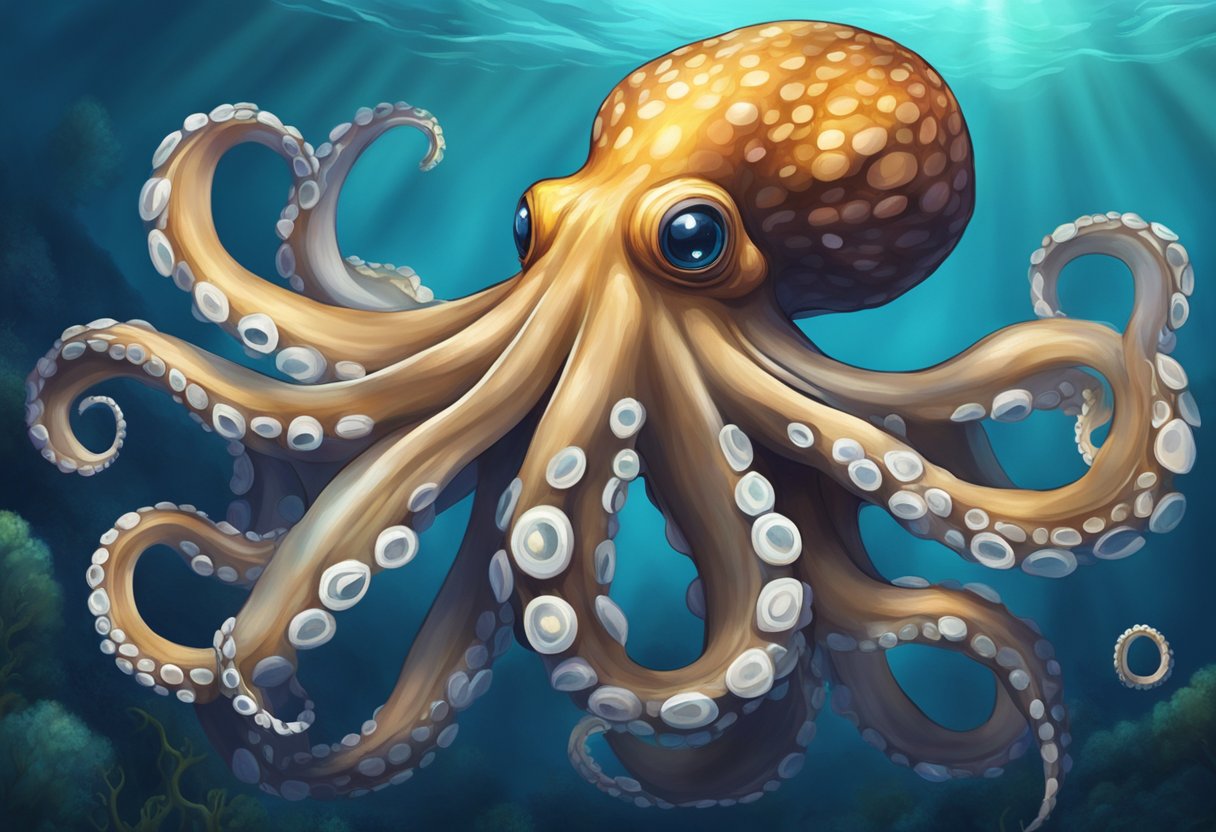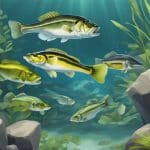Types Of Octopus
Octopuses are fascinating creatures that belong to the cephalopod family. They are invertebrates that are known for their intelligence and adaptability. Octopuses have eight arms that are lined with suction cups and a bulbous head with two eyes. They are bilaterally symmetric and have a beaked mouth located at the center point of their eight limbs.
Octopuses are found in all of the world’s oceans, from shallow coral reefs to the deep sea. They are known to be solitary creatures that spend most of their time hiding in crevices or burrowing in the sand. Octopuses have a unique ability to camouflage themselves, which allows them to blend into their surroundings and avoid predators.
There are over 300 species of octopuses, each with unique characteristics and habitats. Some of the most well-known species include the common octopus, the giant Pacific octopus, and the deep-sea octopus. Each species has its own diet and predation habits, as well as distinct behaviors and intelligence levels. Understanding the different types of octopuses is important for researchers and enthusiasts who want to learn more about these fascinating creatures.
Key Takeaways
- Octopuses are cephalopod invertebrates known for their intelligence and adaptability.
- They have eight arms and a bulbous head with two eyes, and are found in all of the world’s oceans.
- There are over 300 species of octopuses, each with unique characteristics and habitats.
Anatomy and Physiology

Octopuses are soft-bodied, eight-limbed mollusks of the order Octopoda. They belong to the class Cephalopoda, which includes squids, cuttlefish, and nautiloids. Octopuses have a unique anatomy and physiology that allows them to survive and thrive in their aquatic environment.
Arms and Suckers
Octopuses have eight arms that are lined with rows of suckers. These suckers are used to grip and manipulate objects, as well as to move around. Each sucker contains a ring of muscle that can contract and create a vacuum, allowing the octopus to cling to surfaces. The arms are also covered in sensory cells that allow the octopus to taste and smell.
Mantle and Siphon
The mantle is the main body of the octopus, and it contains most of its vital organs. It is covered in skin that is capable of changing color and texture to match the surrounding environment. The siphon is a tube-like structure that is used to expel water and propel the octopus forward. By contracting and relaxing the muscles around the siphon, the octopus can move quickly and efficiently through the water.
Eyes and Camouflage
Octopuses have highly developed eyes that are similar to those of vertebrates. They are capable of detecting light and color, as well as polarized light and patterns. This allows the octopus to see and navigate its environment with great precision. Octopuses are also masters of camouflage, and they can change their skin color and texture to blend in with their surroundings. They accomplish this through the use of specialized cells called chromatophores, which contain pigments that can be expanded or contracted to change the color and pattern of the skin.
Overall, the anatomy and physiology of octopuses are fascinating and complex. Their unique adaptations have allowed them to survive and thrive in the ocean for millions of years. From their arms and suckers to their eyes and camouflage, octopuses are truly remarkable creatures.
Habitat and Distribution
Octopuses are found in different species and live in every ocean of the world. They are very adaptable and can live in everything from small swallow pools to depths up to 2,000 meters (6,600 feet). They only live in saltwater and are rarely found in freshwater.
Oceanic Regions
Octopuses are known to inhabit various regions of the ocean, including pelagic waters, the seabed, and the intertidal zone. Most species grow quickly, mature early, and are short-lived. They are generally solitary and territorial.
Coral Reefs and Rocks
Octopuses also live in coral reefs and rocky areas. They spend much of their time in dens, which are small holes and crevices in rocks and coral. These dens provide them with protection from predators and a safe place to lay their eggs.
Sandy Bottoms and Dens
Octopuses can also be found in sandy bottoms and dens. They are known to burrow into the sand to hide from predators and to ambush their prey. These dens can also be used for laying eggs and hatching young octopuses.
In conclusion, octopuses are found in different species and live in every ocean of the world. They are very adaptable and can live in different environments ranging from small swallow pools to depths up to 2,000 meters (6,600 feet). Octopuses are known to inhabit various regions of the ocean, including pelagic waters, the seabed, and the intertidal zone. They can also be found in coral reefs, rocky areas, and sandy bottoms.
Diet and Predation
Feeding Habits
Octopuses are known for their diverse diet, which includes a wide range of prey such as crabs, fish, crustaceans, mollusks, snails, and even other octopuses. They are highly skilled hunters and use their intelligence and camouflage abilities to catch their prey. Octopuses have a unique feeding behavior, using their beak-like mouth to break down food before consuming it.
Some species of octopuses are known to feed on small sharks and even birds. They also eat other invertebrates, such as squid and cuttlefish. Octopuses feed on plankton when they are young, but as they grow, they start to hunt larger prey.
Predators and Defense Mechanisms
Octopuses have many predators, including sharks, dolphins, and some species of fish. To defend themselves, octopuses have developed various defense mechanisms. Some species of octopuses can change color to blend in with their surroundings, making them almost invisible to predators. Others can release ink to create a cloud that confuses their predators, allowing them to escape.
Octopuses also have venomous saliva that they can use to immobilize their prey or defend themselves against predators. Some species of octopuses have sharp spines on their arms that can cause injury to predators.
In conclusion, octopuses have a diverse diet and use their intelligence and unique feeding behavior to catch their prey. They also have various defense mechanisms to protect themselves against predators.
Species Diversity
Octopuses are a diverse group of animals with over 300 species. Here are some of the most well-known species:
Common and Giant Pacific Octopus
The common octopus (O. vulgaris) is a medium-sized species that is widely distributed in tropical and temperate seas throughout the world. It lives in holes or crevices along the rocky bottom and feeds mainly on crabs and other crustaceans. This species is thought to be the most intelligent of all invertebrate animals.
The giant Pacific octopus (Enteroctopus dofleini) is the largest species of octopus in the world, weighing up to 150 pounds and measuring up to 15 feet in length. It is found in the North Pacific Ocean and feeds on a variety of prey, including crabs, clams, and fish.
Mimic and Blue-Ringed Octopus
The mimic octopus (Thaumoctopus mimicus) is a species of octopus that is known for its ability to mimic other animals. It can change its shape, color, and texture to resemble a variety of creatures, including lionfish, sea snakes, and flatfish. It is found in the waters of Southeast Asia and feeds on small fish and crustaceans.
The blue-ringed octopus (Hapalochlaena spp.) is a small species of octopus that is found in the waters of the Pacific and Indian Oceans. It is known for its bright blue rings, which are a warning sign that it is highly venomous. Despite its small size, the blue-ringed octopus is considered one of the most dangerous animals in the ocean.
Lesser-Known Species
There are many other species of octopus, some of which are less well-known than others. The dumbo octopus (Grimpoteuthis spp.) is a deep-sea species that is named for its ear-like fins. The seven-arm octopus (Haliphron atlanticus) is a large species that is found in the Atlantic Ocean and has seven arms instead of the usual eight. The Atlantic pygmy octopus (Octopus joubini) is a small species that is found in the Western Atlantic and feeds on small crustaceans. The Caribbean reef octopus (Octopus briareus) is a medium-sized species that is found in the Caribbean Sea and feeds on crabs and other crustaceans. The southern keeled octopus (Octopus australis) is a species that is found in the waters around Australia and New Zealand and has a distinctive keel on its body. The coconut octopus (Amphioctopus marginatus) is a species that is found in the waters of the western Pacific and is known for its habit of using coconut shells as shelters. The greater blue-ringed octopus (Hapalochlaena lunulata) is a species that is found in the waters of the Pacific Ocean and is similar to the blue-ringed octopus, but larger. The California two-spot octopus (Octopus bimaculoides) is a species that is found in the waters of the eastern Pacific and feeds on crabs and other crustaceans. The blanket octopus (Tremoctopus spp.) is a deep-sea species that is named for its large, blanket-like webbing. The red octopus (Octopus rubescens) is a species that is found in the waters of the eastern Pacific and feeds on crabs and other crustaceans. The capricorn octopus (Octopus tetricus) is a species that is found in the waters around Australia and New Zealand and feeds on crabs and other crustaceans. The mosaic octopus (Amphioctopus marginatus) is a species that is found in the waters of the western Pacific and is known for its ability to change color and texture to blend in with its surroundings.
Behavior and Intelligence
Octopuses are known for their remarkable intelligence and complex behaviors. They have a highly developed nervous system and are capable of learning and problem-solving. In this section, we will explore two aspects of octopus behavior: communication and social behavior, and learning and problem-solving.
Communication and Social Behavior
Octopuses are solitary creatures that do not form long-term bonds with other individuals. However, they do exhibit complex social behaviors, such as communication through visual cues and body language. They can change color and texture to blend in with their surroundings or to communicate with other octopuses. They also use their arms to gesture and touch other octopuses, which may be a form of social bonding.
Learning and Problem-Solving
Octopuses are quick learners and can adapt their behavior based on previous experiences and observations. They are capable of observational learning by watching and imitating other octopuses. Studies have shown that octopuses can learn through trial and error, as well as through observational learning.
Octopuses are also capable of problem-solving and can use tools to achieve their goals. For example, some octopuses have been observed using coconut shells as mobile hideouts or building shelters out of rocks. This kind of behavior suggests that octopuses have a high level of cognitive ability and are capable of planning and executing complex tasks.
In conclusion, octopuses are intelligent and complex creatures that exhibit a range of fascinating behaviors. Their ability to communicate and learn from their environment is a testament to their remarkable intelligence.






